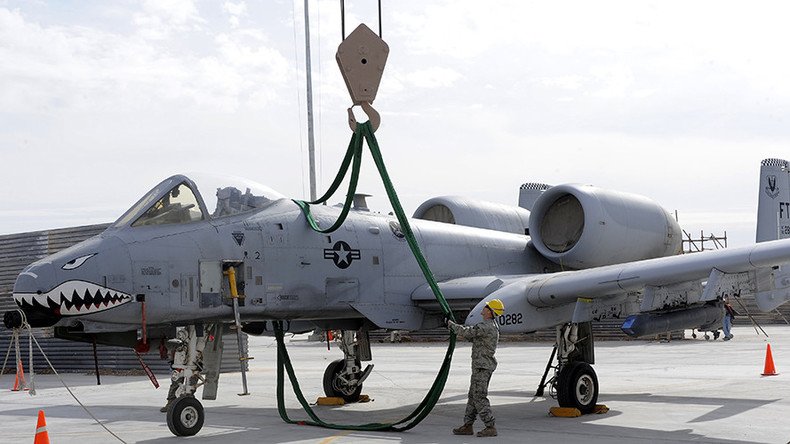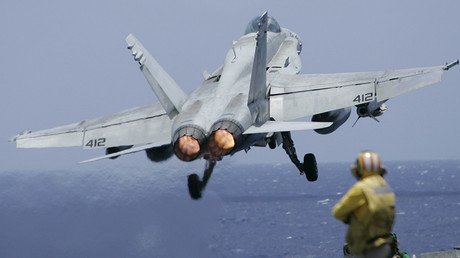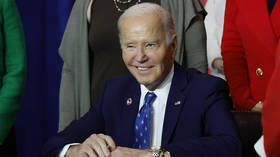US war machine outdated & unprepared, report claims

While maintaining the most powerful armed forces in the world, the United States military is struggling to deal with shortages, out-of-date equipment and personnel issues, according to a new report by a conservative think tank.
In its 2018 Index of US Military Strength, the Heritage Foundation warned that “informed deliberations on the status of the United States’ military power are desperately needed” and that the world faces a “significantly weaker America.”
The report graded aspects of the Army, Navy, Air Force, Marines and nuclear weapons capabilities on a five-point scale between “Very Weak” and “Very Strong,” gauging the overall ability of the military to fight two capable foes simultaneously as “marginal.” Along the way, the report pointed out several aspects in which the armed forces were lacking.
Raid maintenance fund for missile defense, Pentagon asks Congress https://t.co/BzWbuwYBXBpic.twitter.com/DeYYdAB439
— RT America (@RT_America) September 30, 2017
The Army’s equipment is well maintained but is getting old and this poses long-term difficulties, with a reduced budget making new procurements more difficult, report claimed. Obama-era cutbacks have left the Army smaller and less prepared than it was before, with only one-third of its brigade combat teams (BCTs) being ready for deployment. There is also a shortage of heavy munitions such as Patriot and Hellfire missiles.
The Navy’s 276-ship fleet, though an increase from 2016, is not capable of maintaining a global presence as it is mandated, while its readiness has suffered due to poor training. To illustrate this, Heritage gave the example of three incidents this year where Navy ships collided with other vessels, as well as another where a missile cruiser ran aground in Japan. Seventeen sailors were killed in the accidents.
READ MORE: ‘We allowed standards to drop’: US Navy officers testify on warship collisions
“People were really quick to talk about readiness, and it was too low in the defense budget or [budget caps], but we did not make that jump because the investigation isn’t complete yet,” Heritage expert Dakota Wood told Defense News. “But it does indicate [a deficiency] in basic attention and ship-handling skills.”
This led the Navy’s ability to meet combat requirements being downgraded from “weak” to “very weak.”
The Air Force, meanwhile, is gradually shrinking, and now is the smallest it has been for decades. Many of its planes are also old and outdated, with the average of an aircraft being 27. Here, too, there are readiness issues.
“Of 36 squadrons, only four are assessed as full-spectrum mission-capable, so pilots have enough hours to fly the various profiles, fly high, fly low, fly in contested airspace,” Wood explained. “If you aren’t flying as many hours, you have to pick and choose what you train to do.”
The Marines, too, suffer a shortage of dependable aircraft, as only 41 percent of its fixed-wing and rotary-wing planes are flyable. This has dropped it readiness rating from “marginal” to “weak.”
America’s nuclear arsenal fared slightly better than the other arms of the military, although there were still key issues. While the US still has enough nuclear firepower to do some serious damage to its opponents, most of its stockpile is from the Cold War and hasn’t been upgraded and modernized.
There are also demographic issues – the scientists who were original involved in developing nukes during the Cold War are getting old and retiring, so nuclear capabilities now lay in the hands of a younger generation with less hands-on experience. The US is also not currently testing nuclear weapons, which would be a setback if some technical problems arise.
'We could potentially miss or hit, we don't know for sure' https://t.co/kCNTpcLzD6
— RT America (@RT_America) September 20, 2017
Despite all these problems, the US still has the most powerful military in the world, spending more money on defense than Russia, China, Saudi Arabia, India, France, Great Britain, and Japan put together. It also has the most military bases – nearly 800 in more than 70 countries – compared to a mere 30 from Great Britain, France, and Russia combined.













